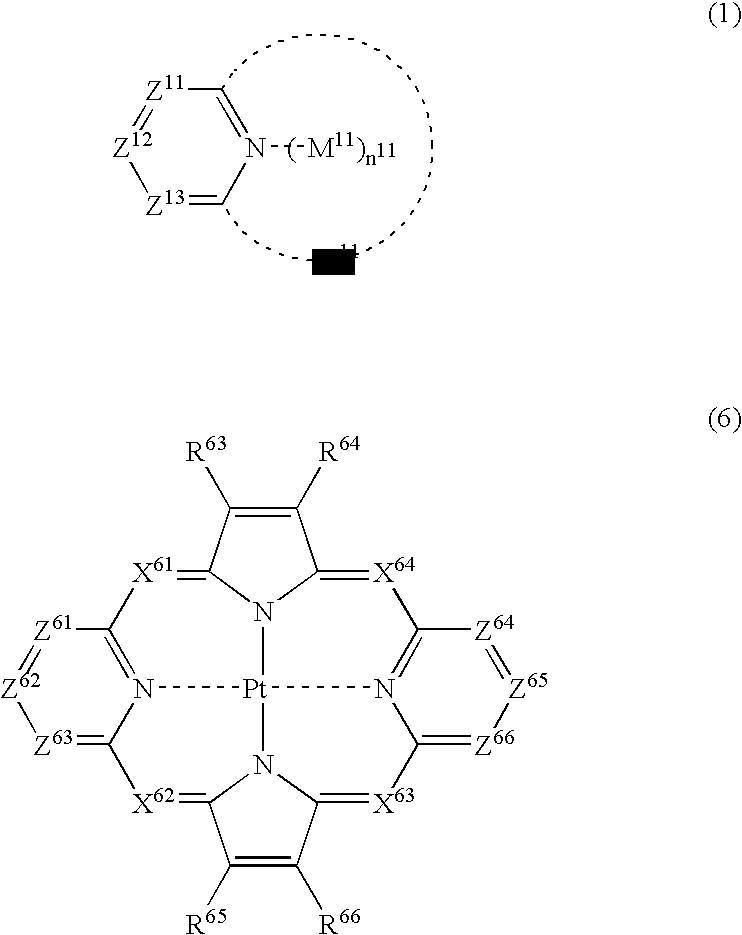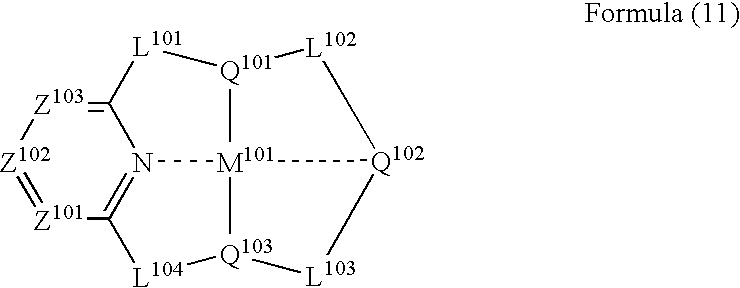Organic electroluminescent device and platinum compound
a platinum compound and electroluminescent device technology, applied in the field of electroluminescent devices, can solve the problems of low quantum efficiency of the luminescent device, the need for life prolongation of the phosphorescent material, and the limitation of light emission
- Summary
- Abstract
- Description
- Claims
- Application Information
AI Technical Summary
Problems solved by technology
Method used
Image
Examples
example 1
[0122] A cleaned ITO substrate was placed in a vapor deposition apparatus, and on the substrate, Compound (8) of the present invention was vapor-deposited, to form a film of 5 nm thickness, and then α-NPD (4,4′-bis-[N-(1-naphthyl)-N-phenylamino]biphenyl) was vapor-deposited, to form a film of 60 nm thickness, and then Alq3 (tris(8-hydroxyquinolinato)aluminum complex) was vapor-deposited, to form a film of 40 nm thickness, in this order. Then, a patterned mask (for adjusting each emission area to 4 mm×5 mm) was set on the above-obtained organic thin layers, and further thereon, in the vacuum deposition apparatus, lithium fluoride was vapor-deposited, to form a film of 3 nm thickness, followed by vapor-deposition of a 400 nm-thick Al film. The thus-produced EL device was subjected to luminescence by applying, thereto, a DC constant voltage, by means of a source measure unit, Model 2400, made by Toyo Technica Co., Ltd., and the luminance shown by the EL device was measured using a lumi...
PUM
| Property | Measurement | Unit |
|---|---|---|
| reaction time | aaaaa | aaaaa |
| reaction time | aaaaa | aaaaa |
| reaction time | aaaaa | aaaaa |
Abstract
Description
Claims
Application Information
 Login to View More
Login to View More - R&D
- Intellectual Property
- Life Sciences
- Materials
- Tech Scout
- Unparalleled Data Quality
- Higher Quality Content
- 60% Fewer Hallucinations
Browse by: Latest US Patents, China's latest patents, Technical Efficacy Thesaurus, Application Domain, Technology Topic, Popular Technical Reports.
© 2025 PatSnap. All rights reserved.Legal|Privacy policy|Modern Slavery Act Transparency Statement|Sitemap|About US| Contact US: help@patsnap.com



